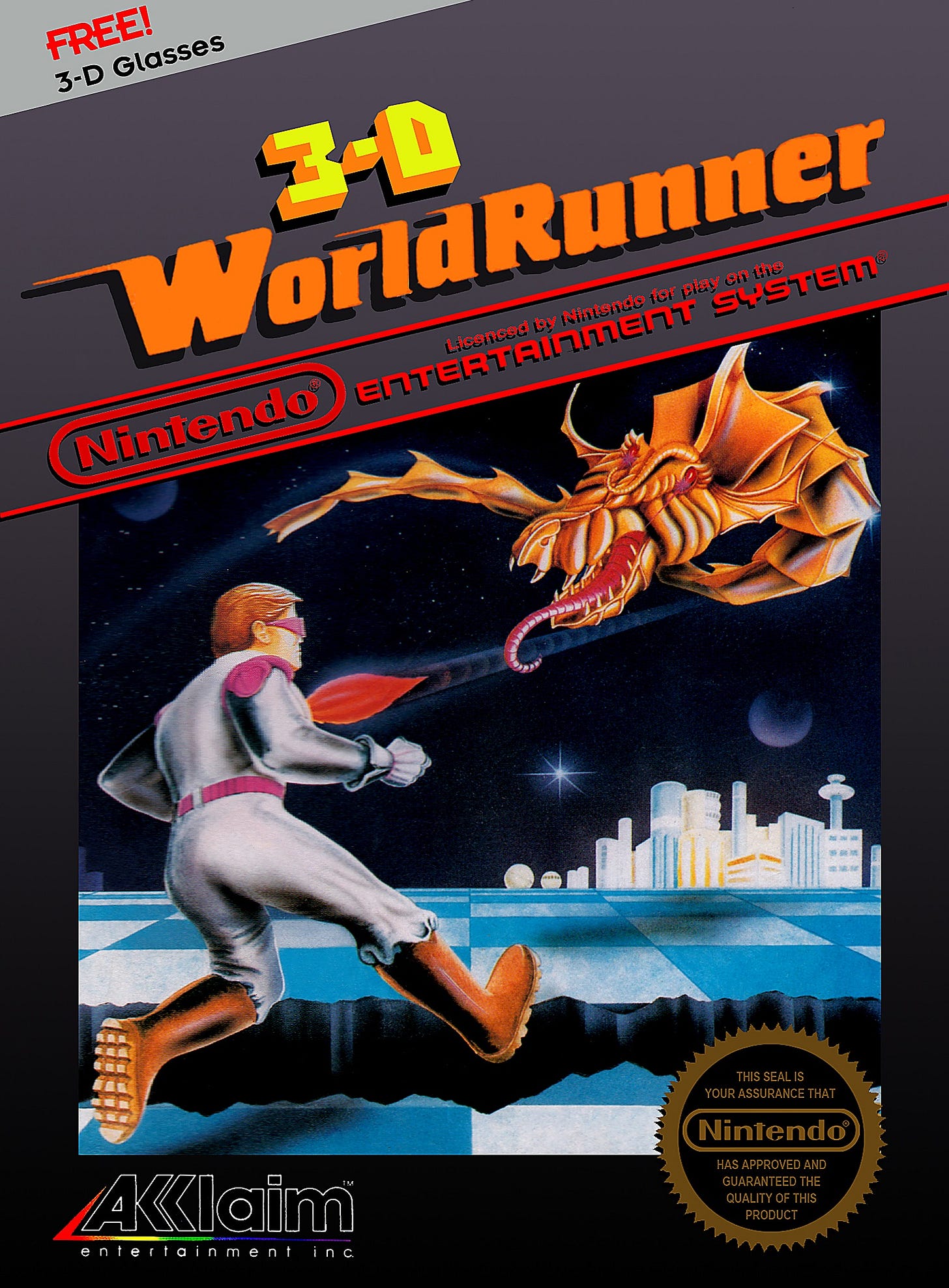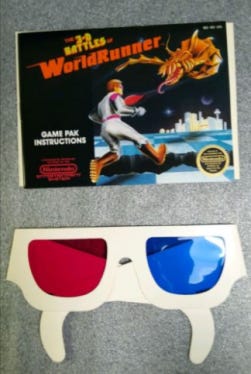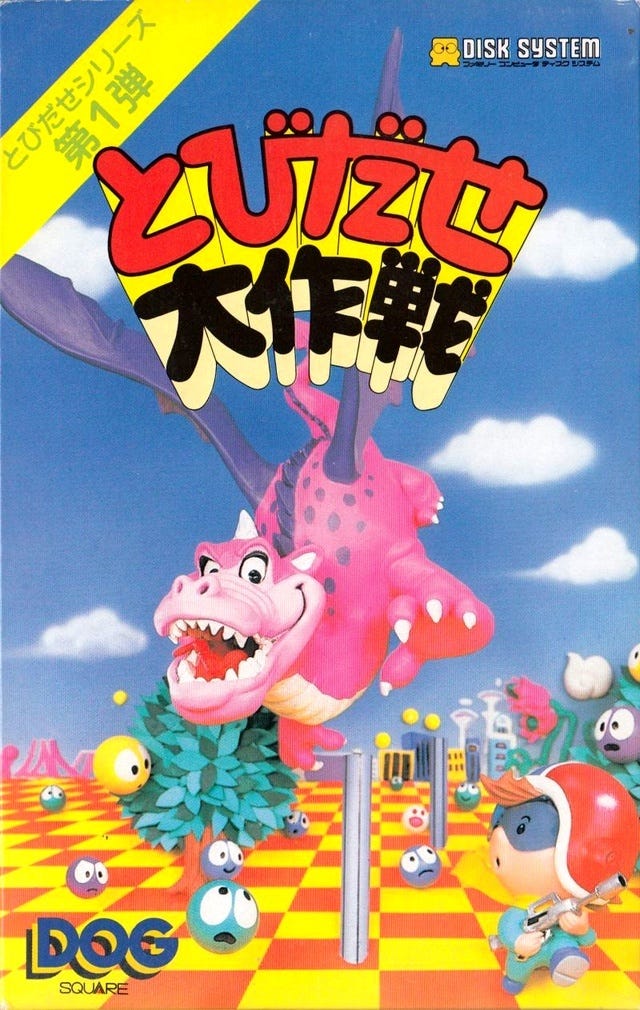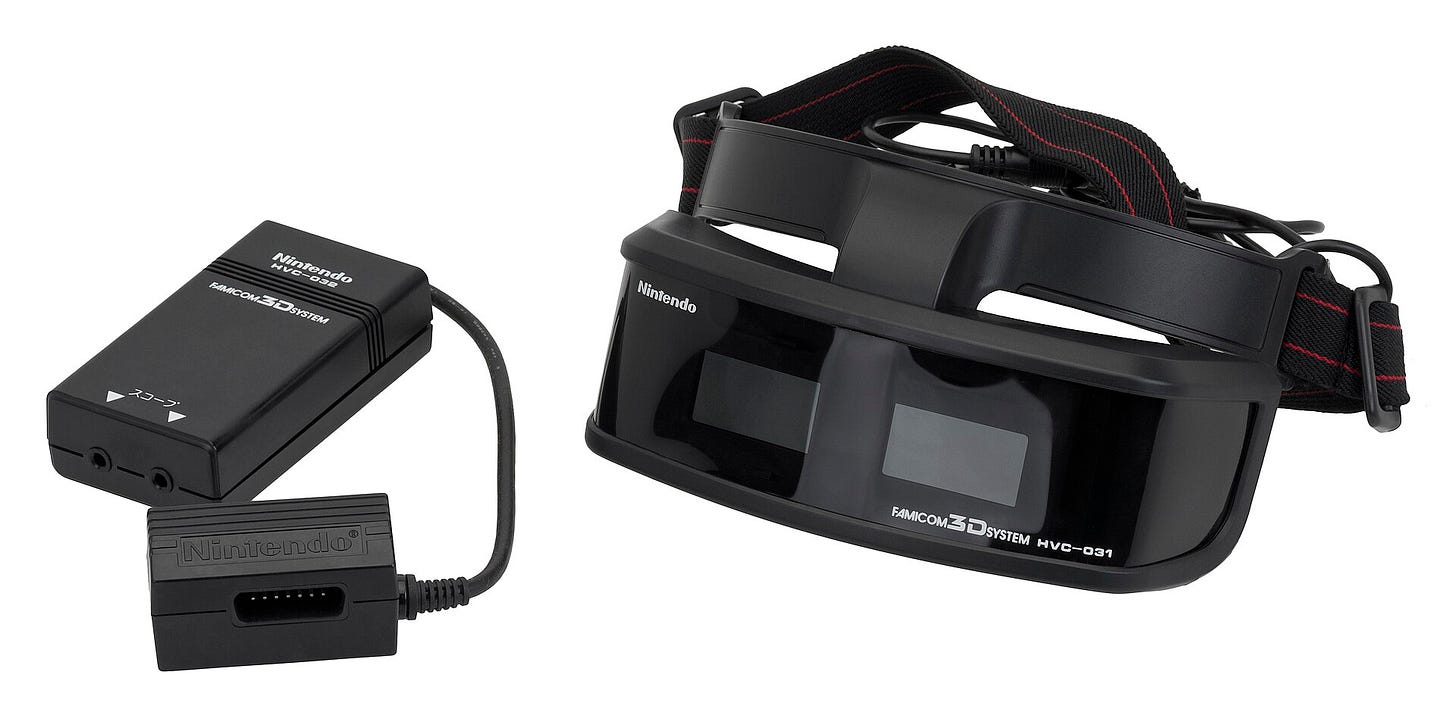Nintendo is Great is a Substack devoted to exploring the world of Nintendo - their games, their consoles, their merchandise - in mostly chronological order, starting with the NES and continuing to the upcoming Switch 2.
Some posts are free, some, like this one, are for paid subscribers only. Don’t forget to sign up below. Thanks for reading!
3-D WorldRunner
PUBLISHER: Acclaim
DEVELOPER: Square
RELEASE DATE: Sept. 1987 (US)
ALSO AVAILABLE ON: Famicom Disk System
When you need a gimmick to sell your game, is the game itself worth playing?
3-D World Runner was originally sold with 3-D glasses, the red-and-blue kind that theaters used to give out in the 1950s. Press ‘Select’ while playing, and you switch to “3-D Mode.” In theory, images should pop out of the screen while you’re playing. In practice, your results may vary.
Unless you’re ten years old, pretending you’re on a secret space mission, turn off 3-D mode and remove the glasses if you want to advance beyond the first couple levels.
3-D WorldRunner was the first third-person, forward-scrolling game of its kind for the NES upon its release. A landmark, perhaps, but the rhythm and movement of the game is disorienting enough without having a green pole or some silly looking enemy up in your face.
Jack the WorldRunner runs to save the world from suspicious looking dragons. He leaps because otherwise the gaping chasms will eat him alive. Sounds simple, enough. Like the British police, Jack doesn’t even carry a firearm, so assured is he of his own running and jumping skills.
But just knowing how to run and jump isn’t enough. Timing is a key factor, as well. Jump too low and Jack will sink slowly into the chasm. Jump too high and he might miss his landing. Floating head enemies occasionally appear while he’s jumping and while he can strafe as far as you want left or right, you always have to stick that landing if you want him to run another day.
By level three, 3-D WorldRunner provides yawning black pits of despair so wide, not even Jack can jump over them without the help of precariously placed bouncy frogs. Trial-and-error is the key to victory here, not seeing in three dimensions.
*image courtesy of The Pixels
Famicom Disk System Version, GOOOO!
Before the 3DS and before the Virtual Boy, there was the Famicom 3D System, a pair of active-shutter glasses that provided “3D” stereoscopic imagery for otherwise 2D games.
If you’re thinking, “Boy, that looks awkward and uncomfortable to wear,” you’d be right. At least according to Wikipedia who says that the glasses are “clunky.” Worse yet, only a handful of games were released for the doomed peripheral - including 3-D WorldRunner or as it’s known in Japan, Tobidase Daisakusen.
As seen above, when 3-D WorldRunner came to the States, gamers only received a pair of anaglyph 3D glasses instead of the stereoscopic glasses headset. Ironically, neither technology seemed to work very well at providing a 3D image. At least the anaglyph glasses didn’t cost extra (or did they?!).
If you’re going to try some early attempts at 3D gaming for an 8-bit system, stick with Sega’s 3D glasses for the Master System. Those are clunky and uncomfortable to wear as well, but supposedly, they work better than either the Famicom 3D System or the anaglyph glasses. I say “supposedly…” I owned a pair of Master System 3D glasses and they did not work whatsoever. Your own three-dimensional mileage may vary.
Keep reading with a 7-day free trial
Subscribe to Nintendo is Great to keep reading this post and get 7 days of free access to the full post archives.







